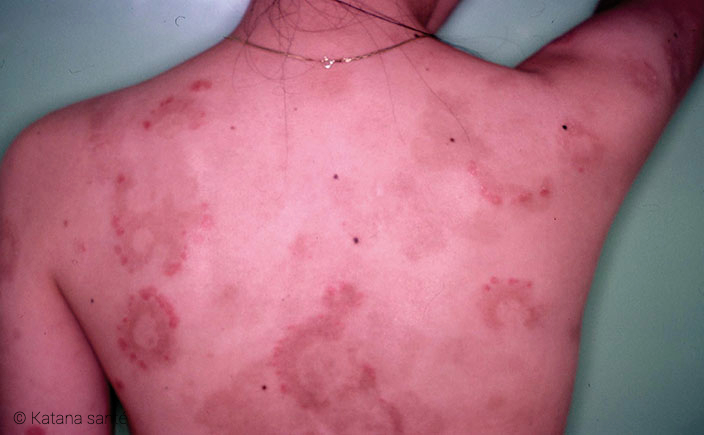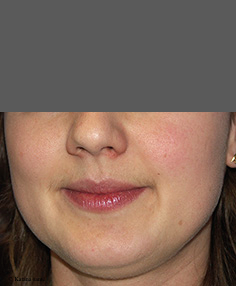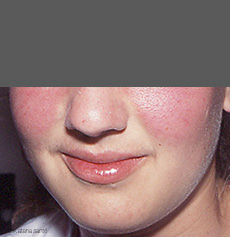Existují 3 typy postižení kůže specifické pro lupus, které se zhoršují působením slunečního záření:
Akutní kožní lupus, což je červená vyrážka, která se objevuje symetricky na nose a lícních kostech, ve výstřihu nebo na končetinách a připomíná trochu tvar motýla, odtud logo mnoha lupusových skupin, nebo karnevalovou masku, vypadající jako vlčí oči, odtud název lupus. Akutní kožní lupus mizí bez následků. Na černé kůži mohou někdy zůstat hyperpigmentované (tmavší) jizvy.
Subakutní kožní lupus, což je prstenčitá nebo polycyklická deskovitá vyrážka. Snadno se objevuje na končetinách a trupu. Většinou zmizí beze stop, ale někdy může způsobit pigmentové jizvy.
Chronický kožní lupus (jehož nejčastější formou je diskoidní lupus). Jedná se o dobře ohraničené červené skvrny se silnými šupinami, které se nacházejí na obličeji, uších a pokožce hlavy. Střed vyrážky je bělavý a odpovídá zjizveným tkáním.
Tento bělavý střed je trvalý. Na pokožce hlavy vede k vypadávání vlasů (alopecii) v podobě plaků, které je často trvalé.

 |
 |
Existují 3 specifické formy kožního lupusu: akutní, subakutní a chronický. Akutní a subakutní kožní formy mizí bez zanechání stop. Atrofie jizvy u chronického lupusu (diskoidního) je trvalá. Slunce často zhoršuje poškození kůže lupusem.